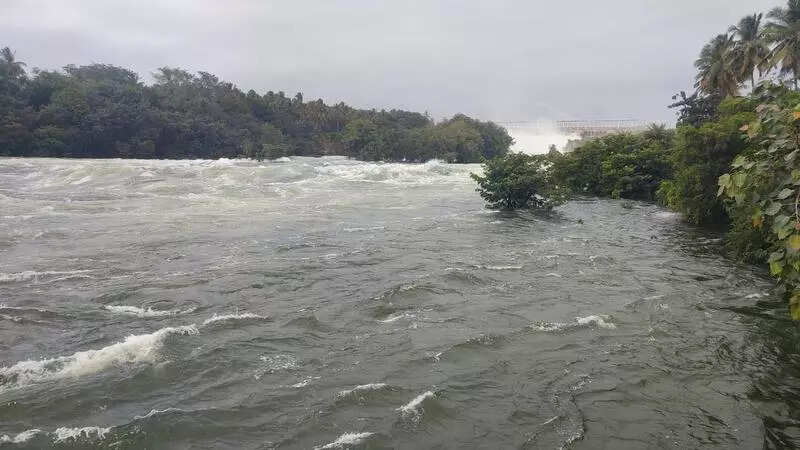With reservoir levels at 80%, Karnataka anticipates good crop yield, but experts warn of rainfall risks | Bengaluru News

Bengaluru: With reservoirs in Karnataka already 80% full and early water release in progress, officials are hopeful of a strong agricultural season this year. Pre-monsoon showers have advanced the kharif sowing cycle, with nearly three-fourths of sowing already completed. But while the water levels suggest a promising season, experts have warned that excessive rainfall could damage crops and affect market stability.As of July 26, Karnataka’s major reservoirs collectively held 712.5 tmcft of water — an increase from 679 tmcft this time last year, as per the Karnataka State Natural Disaster Monitoring Centre (KSNDMC). The storage covers the three main river basins — Cauvery, at 111.2 tmcft (up from 109.9 tmcft), Krishna at 349.3 tmcft (up from 341.3 tmcft), and the Hydel basin at 228.8 tmcft (a significant rise from 209.9 tmcft) — and Vani Vilas Sagar. The state has 14 major dams — Linganamakki, Supa, Varahi, Harangi, Hemavathi, KRS, Kabini, Bhadra, Tungabhadra, Ghataprabha, Malaprabha, Almatti, Narayanapura, and Vani Vilas Sagar — with a total capacity of 895.6 tmcft.Minor irrigation minister Boseraju NS said: “With good rainfall this year and the reservoirs nearly full, agriculture will benefit even more. The irrigation department is already diverting water as per routine planning, ensuring good crop yield. Water and power are two essentials for farmers — if both are available, they face no issues. But if rains fail, prices rise and farmers suffer. Fortunately, this year, things are looking positive.“An agriculture department official said sowing has crossed 72% so far this season, as against 69% last year. “Early water release and timely rain in June have benefited rain-fed and horticulture areas. The paddy belts in the Tungabhadra command area, Krishna, and Cauvery basins are expected to do better than last year,” the official added.However, farmer leader and activist Chukki Nanjundaswamy flagged concerns over maize crop losses. “Nearly 70,000 hectares of maize were lost this year to pest attacks (fall armyworms), and fungal infections — a fallout of early rains last year. Only 40% of farmland is canal irrigated; the rest depends on rainfall. New pests and diseases are emerging, but there’s been no comprehensive study on this, leaving farmers to struggle.“Ramesh Chandra Lahoti, past president of Federation of Karnataka Chambers of Commerce and Industry (FKCCI) and the Bangalore Wholesale Pulses & Food Grains Merchants’ Association, said: “Pulses like green gram, tur, and chana have been sown, followed by paddy. If moderate rainfall continues without flooding, it will benefit farmers and consumers alike, ensuring price stability.”As of July 18, 57.8 lakh hectares had been sown for the Kharif season against a target of 82.5 lakh hectares. Early kharif sowing had exceeded targets, touching 107%. Rainfall so far this season has been close to normal, with 349 mm recorded against an expected 356 mm.Reservoir inflows remain high — Hydel and Krishna basins both at 1.1 lakh cusecs, and Cauvery at 51,184 cusecs.GFXFILLING UP FAST (as of July 26)BasinGross capacity (in tmcft)20252024Cauvery114.5111.2109.9Krishna422.4349.3341.3Hydel328.1228.8209.9Total*895.6712.5679— Source: Karnataka State Natural Disaster Monitoring Centre | * Total includes figures for Vani Vilas Sagar





